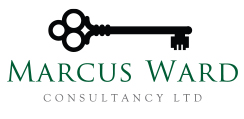Latest from the courts
The difference between intended use and first actual use of an asset.
In the Dutch case of Stichting Schoonzicht (C‑791/18) the AG was asked to provide an opinion on the interaction between clawback and the Capital Goods Scheme (CGS) via Directive 2006/112/EC, Articles 185 and 187. Details of the CGS here. In the UK clawback is set out in The General Regulations 1995, Reg 108.
Background
Stichting Schoonzicht constructed a number of apartments which it intended to sell on completion. This would have been a taxable supply and afforded full input tax recovery on the costs incurred on the development. Unfortunately, due to market conditions, the business was unable to find buyers at the appropriate sale price. Therefore, a decision was made to let some of the flats on a short-term basis until the market picked up. This was done and created an exempt supply. The intention to make taxable supplies remained, but in the meantime, exempt supplies had actually been made. This could affect the original input tax claim. Details of partial exemption here.
Technical
The Dutch referring court entertained doubts about the compatibility of the ‘first-use full adjustment’ requirement provided for under Netherlands law and the CGS.
So the issue was whether the CGS (Article 187 of the VAT Directive) applied such that any required adjustments to the initial input tax claim could be made via a CGS calculation, or whether, as the Dutch authorities contended, there should be a one-off clawback of the input tax previously claimed.
Decision
In the AG’s opinion, the Dutch tax authorities could clawback 4/7 of the input tax on the construction (as four of the flats were let and three remained unoccupied). The AG decided that the CGS could co-exist with clawback and that EU Member States are allowed to adjust the initial deduction of input tax using clawback where actual use varies from intended use. A distinction was made between clawback and the CGS. The CGS is intended to adjust input tax claims as a result of fluctuations in the taxable use of capital assets over a period of time (ten years for buildings in the UK).
Commentary
In the UK, there are published easements for input tax recovery in similar circumstances: “VAT: Partial Exemption – adjustments when house builders let their dwellings”. However, this is an interesting AG opinion, is worth a read and it will be interesting to see how this develops. However, with prior planning, this situation may be avoided in the UK (where new house sales are zero rated).
